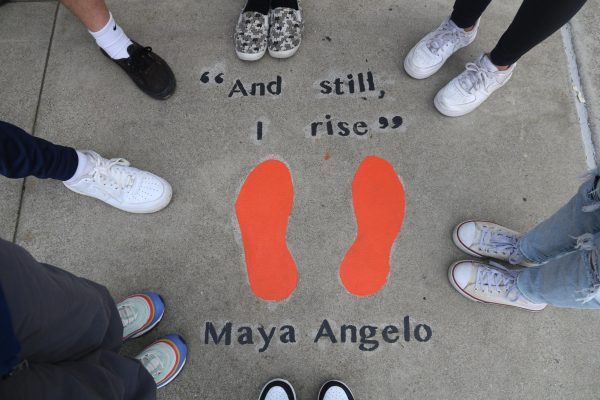Digital Paw Print
Microsoft, Google closing in on Apple
During these last few weeks, Apple has been receiving quite a lot of attention over its new releases, such as the iPhone 6S, the iPad Pro, Apple TV, OS X El Capitan, etc.
But let’s shed the spotlight on two big companies that had a couple of big announcements themselves: Microsoft and Google.
Google, the creator of the world’s most widely used software products, had quite a few hardware announcements at their event on Sept. 29.
New to the lineup of Nexus phones–Google’s series of phones running pure and unaltered Android OS–are the 5X and 6P. What the 5X makes up for in lack of groundbreaking features is its low price. It may not have the new whatchamacallit or thingamabobber, but it does come in at a sweet $379 unlocked.
You might be chuckling, thinking to yourself, “Ha! $379! I can get a better phone on contract for a lower price! In your face, GEEK!”
And that’s where you’d be wrong. Most major carriers (except for AT&T, because they aren’t hip anymore) are dropping contracts, opting in for programs that allow you to pay for the full price of your phone over a certain length of time.
That’s where the 5X comes into play.
For a phone that has a 1.8GHz processor, 12.3 megapixel camera,which also captures video in 4K, a 5.2 inch Full HD display and the latest flavor of Android (straight out of the box), it seems like quite the bargain.
The next phone on the list is the 6P. This baby comes loaded with a 5.7 inch screen (touting a 2,560×1,440 resolution), an octa-core 2.0GHz processor, 3 gigs of RAM, and up to 128GB of memory.
The 6P shares the same 12.3MP camera, and Android Marshmallow as its younger brother, the 5X. And if you want one, the 6P will run you $499 unlocked.
And finally, the moment you’ve all been waiting for. Drumroll please…introducing Android 6.0, Marshmallow!
AND THE CROWD GOES WILD!
Excuse the fanfare, confetti, and burst eardrums ladies and gentlemen, but believe me, Android 6.0 is worth celebrating.
Android Marshmallow has a lot of new features crammed in it. The first most significant change is Google Now “On Tap,” which works by pressing and holding the home button while within another app. On Tap then provides relevant information about whatever you’re doing.
You can also ask questions about what you’re looking at. If you’re looking at a movie review, you can ask Google Now when the movie is playing near you. Neat, huh?
Marshmallow also included a feature called Doze. After a certain period of inactivity, Android will kill off battery draining processes and optimize battery use. This way, you can get the battery life you need only when you really need it.
On Oct. 6, Microsoft also had a few things to say about its Windows 10 devices.
The software giant is now looking toward adding new devices to the 110 million that run Windows 10.
Those new devices include the Lumia 950 and 950 XL. Both devices will be the first to run Windows 10 Mobile. They both share the same 20 megapixel cameras (with triple LED flash).
The only significant difference between them is the screen size of the XL and its faster processor.
The Surface Pro, Microsoft’s tablet hybrid, also received an upgrade with the Surface Pro 4. The Surface Pro 4 offers an incredible 12.3 inch 2,736×1,824 resolution display, a 6th Gen Intel processor, and an 8MP camera.
The new PC also offers a new Surface Pen (it’s a stylus, or in other words a digital pen) that “combines 1,024 levels of pressure sensitivity” to provide a more realistic experience.
The Surface Pro 4’s sibling, the Surface Book, also had some impressive specs. It features a high resolution 13.5 inch display, 12 hours of battery life, and a 8 megapixel camera all in just 3 pounds worth of metal, plastic, and glass.
Microsoft also claims it’s twice as fast as the Macbook Pro. Take that, Apple.
HoloLens, Microsoft’s VR headset, apppeared as well.
Imagine flying robots whizzing about your living room, breaking through walls. In your hand is a small plastic cylinder. Then, a holographic weapon appears around it. You then begin to battle your robotic foes.
That, in summary, was Microsoft’s demo of HoloLens.
While I find all of this exciting, I still feel puzzled.
Microsoft has remained pretty silent on when Windows 10 Mobile would be released. Now, months after the PC release, a relative timeframe (sometime in December) has been announced.
As a Windows Phone user, I remain frustrated with the company’s lack of transparency. It makes me doubt time and time again that it still cares about its mobile customers.
Windows is a great operating system. It lives up to its slogan, “Do More.” Windows lets you play more, work more, and be more.
But Microsoft should be the one doing more for its users.









